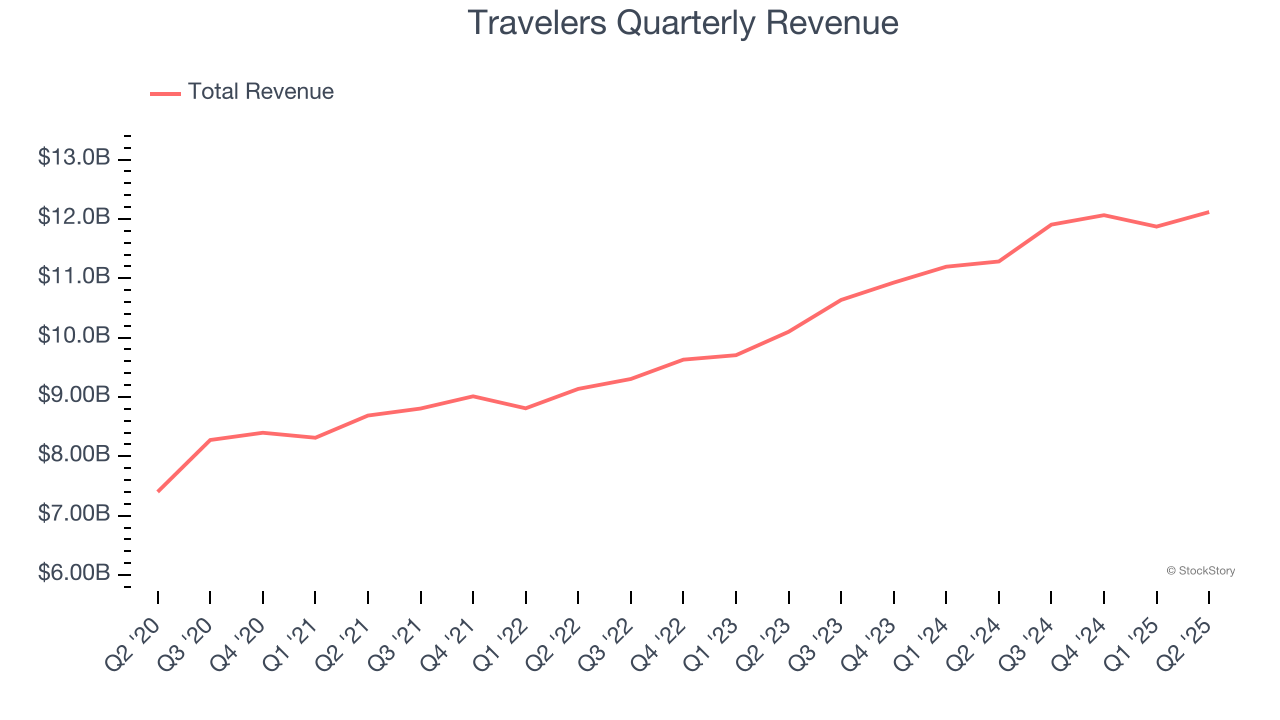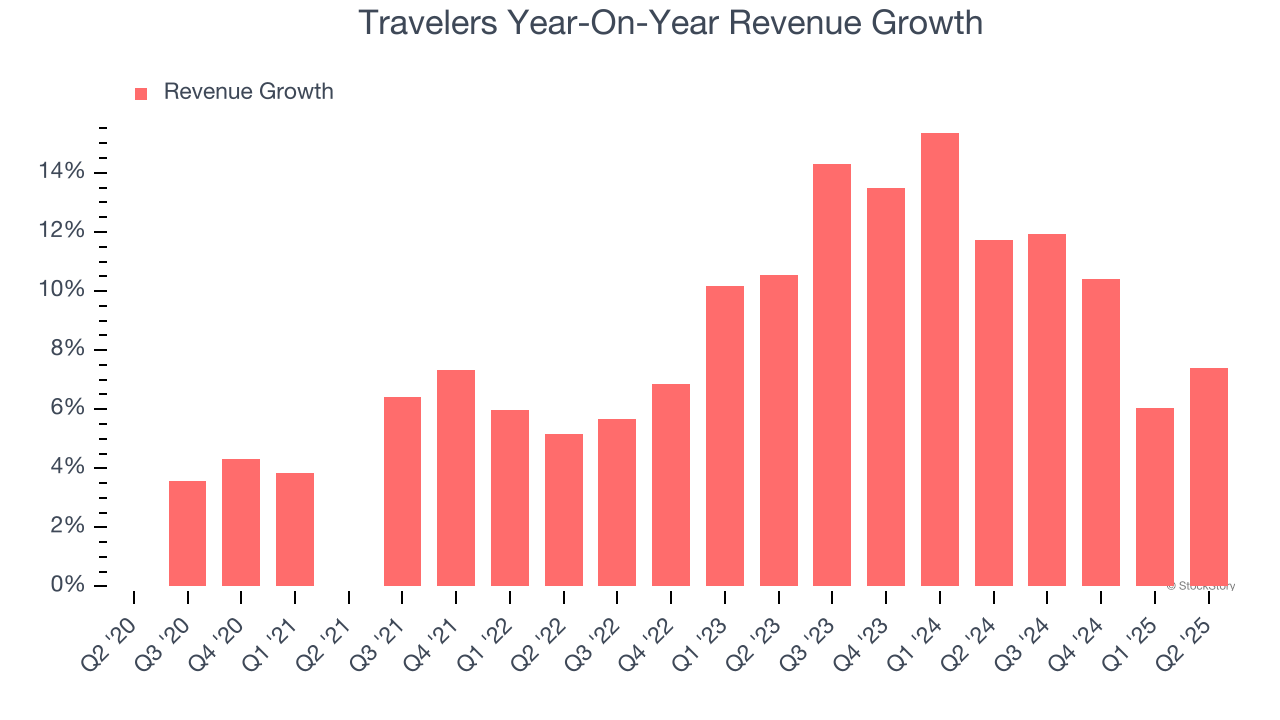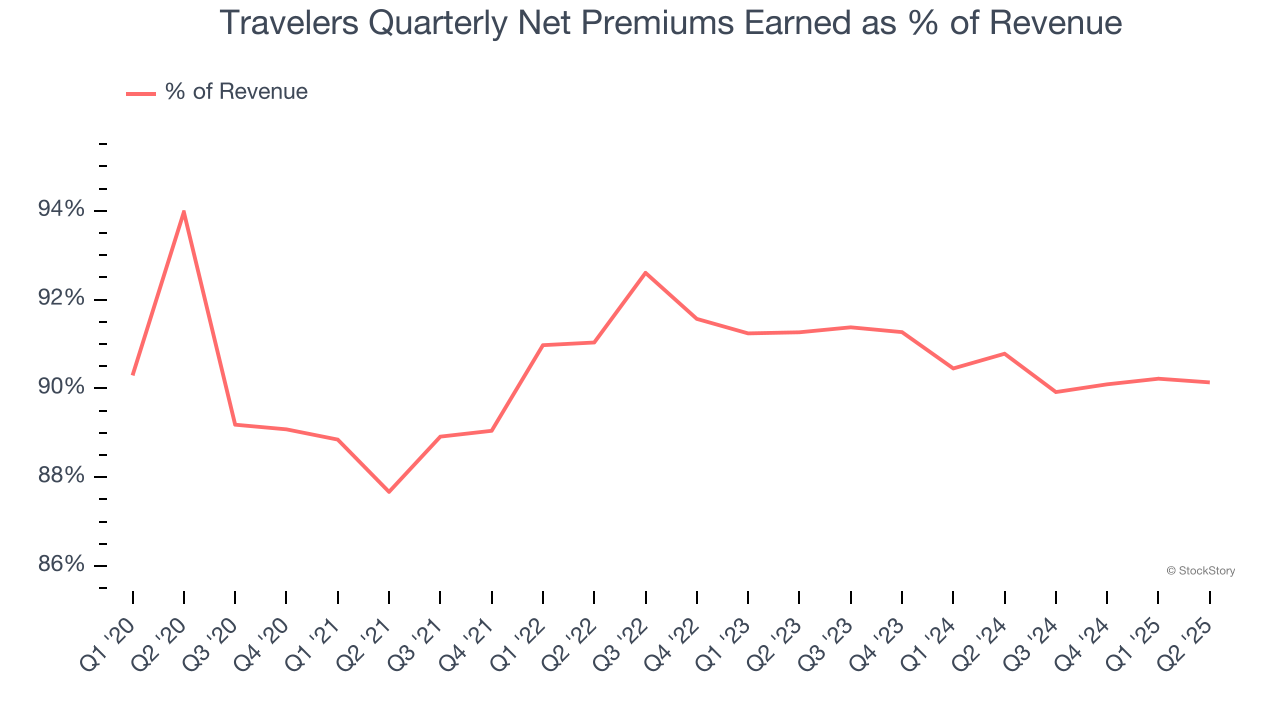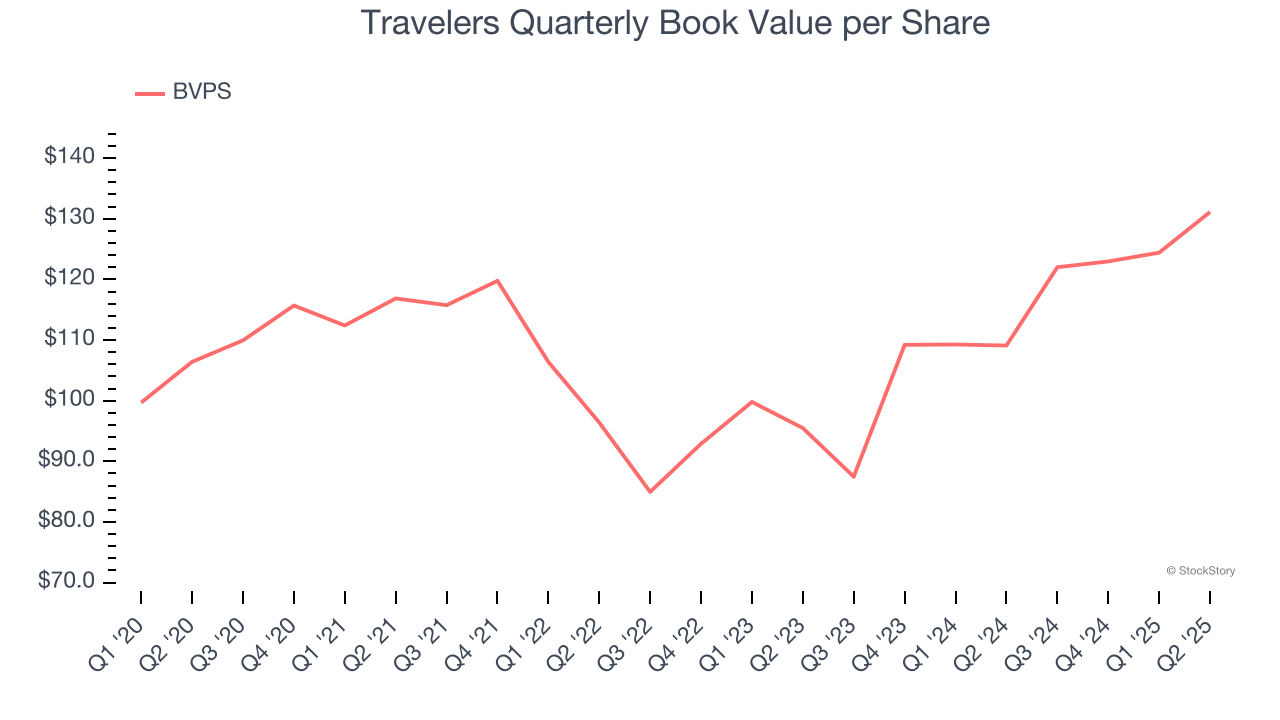
Property and casualty insurer Travelers (NYSE: TRV) met Wall Street’s revenue expectations in Q2 CY2025, with sales up 7.4% year on year to $12.12 billion. Its GAAP profit of $6.53 per share was 76.6% above analysts’ consensus estimates.
Is now the time to buy Travelers? Find out by accessing our full research report, it’s free.
Travelers (TRV) Q2 CY2025 Highlights:
- Net Premiums Earned: $10.92 billion vs analyst estimates of $11.02 billion (6.6% year-on-year growth, 0.9% miss)
- Revenue: $12.12 billion vs analyst estimates of $12.13 billion (7.4% year-on-year growth, in line)
- Combined Ratio: 90.3% vs analyst estimates of 98% (7.7 percentage point beat)
- EPS (GAAP): $6.53 vs analyst estimates of $3.70 (76.6% beat)
- Market Capitalization: $56.96 billion
Company Overview
Tracing its roots back to 1853 when it insured travelers against accidents on steamboats and railroads, Travelers (NYSE: TRV) provides a wide range of commercial and personal property and casualty insurance products to businesses, government units, associations, and individuals.
Revenue Growth
In general, insurance companies earn revenue from three primary sources. The first is the core insurance business itself, often called underwriting and represented in the income statement as premiums earned. The second source is investment income from investing the “float” (premiums collected upfront not yet paid out as claims) in assets such as fixed-income assets and equities. The third is fees from various sources such as policy administration, annuities, or other value-added services.
Thankfully, Travelers’s 8.8% annualized revenue growth over the last five years was decent. Its growth was slightly above the average insurance company and shows its offerings resonate with customers.

Long-term growth is the most important, but within financials, a half-decade historical view may miss recent interest rate changes and market returns. Travelers’s annualized revenue growth of 11.3% over the last two years is above its five-year trend, suggesting its demand recently accelerated.  Note: Quarters not shown were determined to be outliers, impacted by outsized investment gains/losses that are not indicative of the recurring fundamentals of the business.
Note: Quarters not shown were determined to be outliers, impacted by outsized investment gains/losses that are not indicative of the recurring fundamentals of the business.
This quarter, Travelers grew its revenue by 7.4% year on year, and its $12.12 billion of revenue was in line with Wall Street’s estimates.
Net premiums earned made up 90.3% of the company’s total revenue during the last five years, meaning Travelers lives and dies by its underwriting activities because non-insurance operations barely move the needle.

Markets consistently prioritize net premiums earned growth over investment and fee income, recognizing its superior quality as a core indicator of the company’s underwriting success and market penetration.
Software is eating the world and there is virtually no industry left that has been untouched by it. That drives increasing demand for tools helping software developers do their jobs, whether it be monitoring critical cloud infrastructure, integrating audio and video functionality, or ensuring smooth content streaming. Click here to access a free report on our 3 favorite stocks to play this generational megatrend.
Book Value Per Share (BVPS)
Insurance companies are balance sheet businesses, collecting premiums upfront and paying out claims over time. The float – premiums collected but not yet paid out – are invested, creating an asset base supported by a liability structure. Book value captures this dynamic by measuring:
- Assets (investment portfolio, cash, reinsurance recoverables) - liabilities (claim reserves, debt, future policy benefits)
BVPS is essentially the residual value for shareholders.
We therefore consider BVPS very important to track for insurers and a metric that sheds light on business quality. While other (and more commonly known) per-share metrics like EPS can sometimes be lumpy due to reserve releases or one-time items and can be managed or skewed while still following accounting rules, BVPS reflects long-term capital growth and is harder to manipulate.
Travelers’s BVPS grew at a sluggish 4.3% annual clip over the last five years. However, BVPS growth has accelerated recently, growing by 17.2% annually over the last two years from $95.48 to $131.11 per share.

Over the next 12 months, Consensus estimates call for Travelers’s BVPS to grow by 24.3% to $144.55, elite growth rate.
Key Takeaways from Travelers’s Q2 Results
We were impressed by how significantly Travelers blew past analysts’ EPS expectations this quarter "primarily due to lower
catastrophe losses, a higher underlying underwriting gain (i.e., excluding net prior year reserve development and
catastrophe losses), higher net favorable prior year reserve development and higher net investment income". On the other hand, its book value per share missed and its net premiums earned fell slightly short of Wall Street’s estimates. Zooming out, we think this was a mixed quarter. The stock remained flat at $252.25 immediately after reporting.
So should you invest in Travelers right now? We think that the latest quarter is only one piece of the longer-term business quality puzzle. Quality, when combined with valuation, can help determine if the stock is a buy. We cover that in our actionable full research report which you can read here, it’s free.






